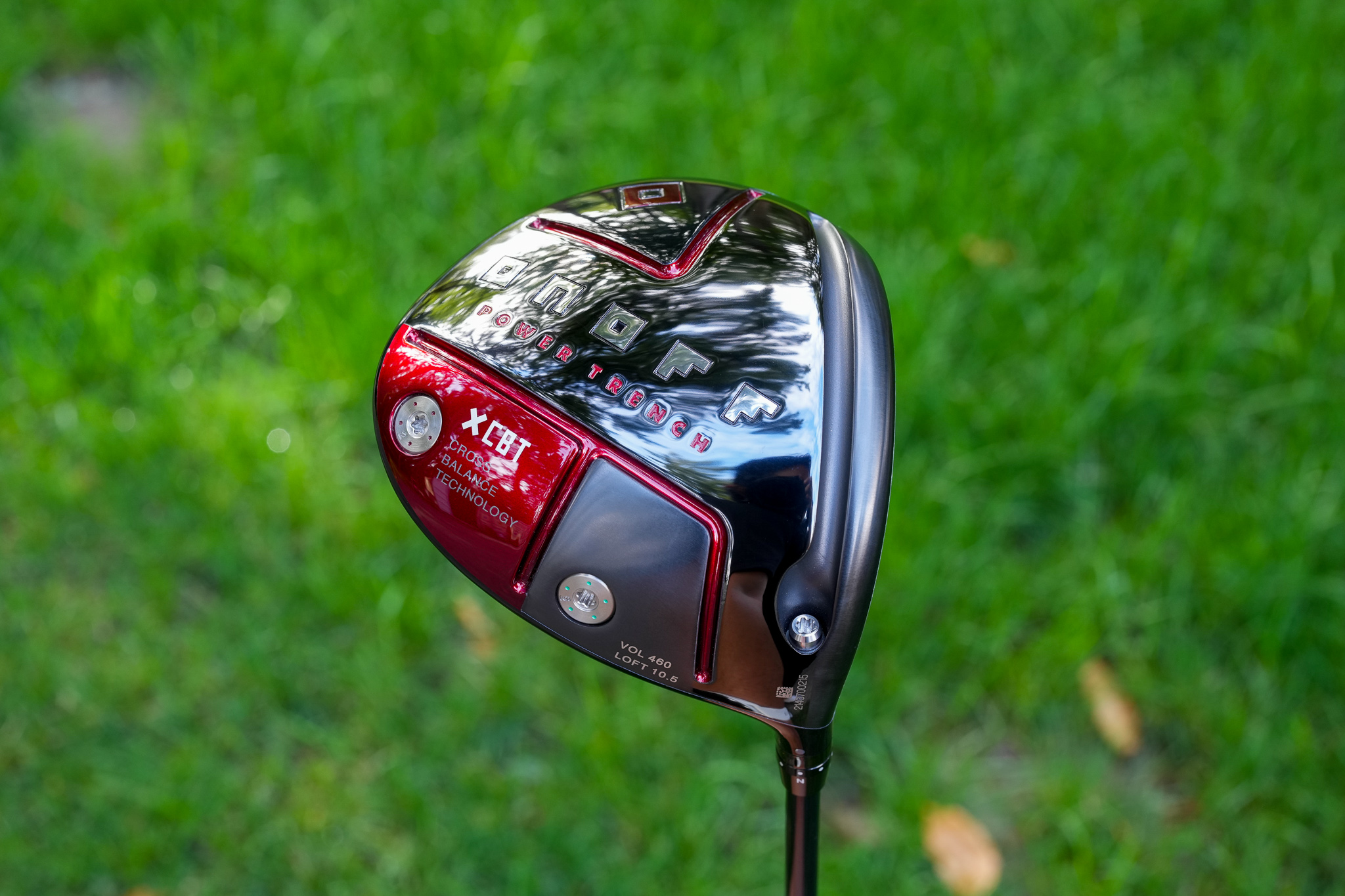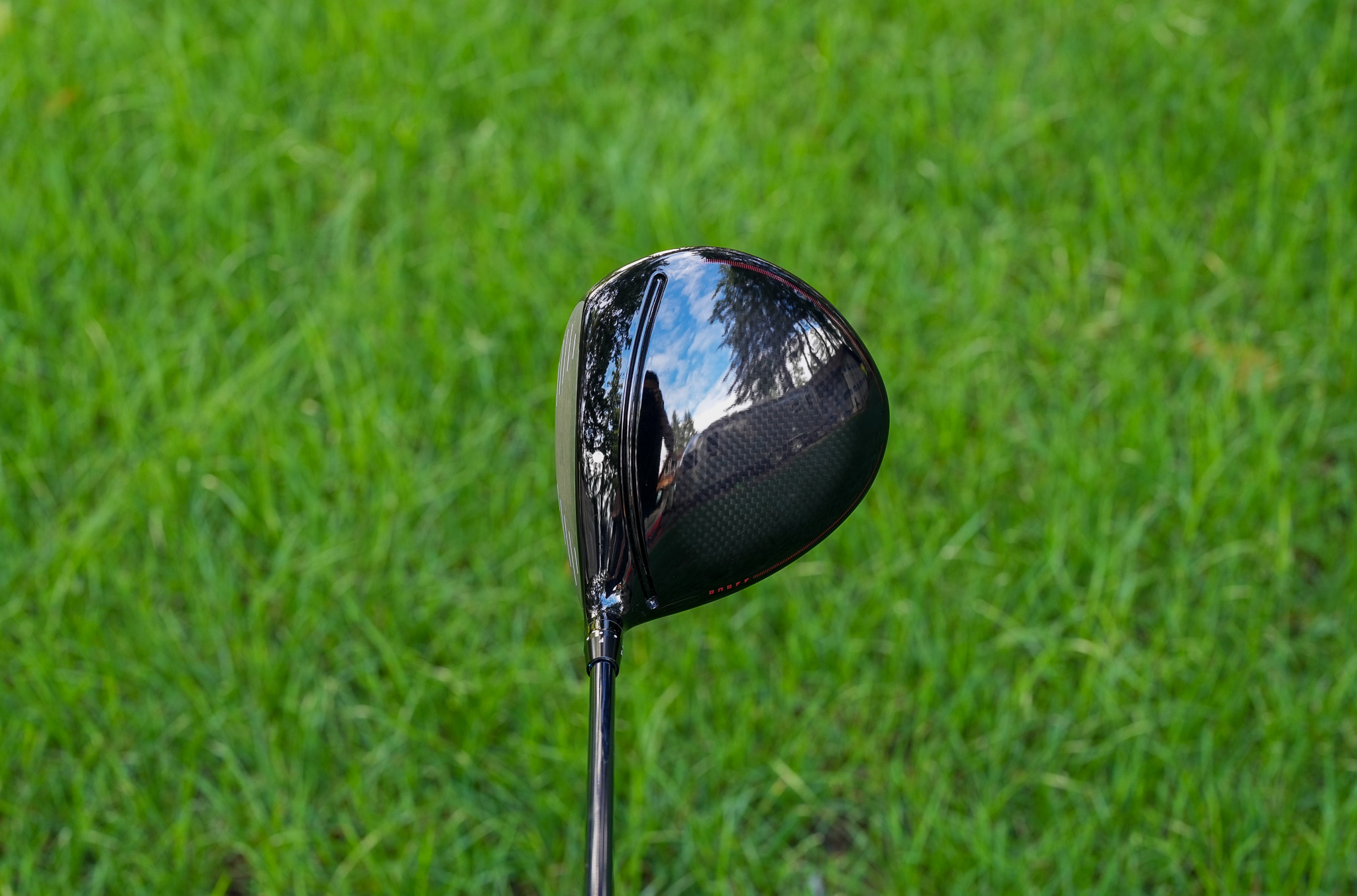The ONOFF AKA Driver – I love this driver. It’s been working great for me and has some features that I believe many golfers can appreciate. First, let me give you a quick breakdown of the different series within the ONOFF lineup. AKA, PLUS, and KURO. AKA is the most forgiving, AKA is the new label for the ONOFF Red series. The key points of the AKA driver are forgiveness, distance and what ONOFF calls “automatic” this is being able to repeat long straight drives consistently.
I have about 6 rounds and a few range sessions into this driver, it is paired with a shaft that I believe to be one of the best in reducing side spin and producing straight penetrating shots, The Basileus AAA Limited which only 300-500 pieces are made each year. The AAA is made of the very best materials. ultra-high elastic 80t + PAN system ultra-high elasticity 50t + medium wide area ultra-high elastic 70t plain weave cloth, low torque design. It gets crazier! ADOPTING TORE CO., LTD., T1100G, and MX40. The midsection of the shaft features 70t plain weave cloth while the tip section has Amorphous carbon for a smooth feel. No other shaft on the U.S market is made of materials this high-end. What do these materials do? they reduce droop, reduce shaft deformation during the swing, they allow for a great feel in a lower torque design. It plays more penetrating, and straighter for longer shots. I’ve been playing AAA shafts for 6-7 years now. Click to read on…
For such an easy driver to hit long and straight it sure does look good during setup. The new AKA is adjustable but I found the neutral position to look about 0.5* closed. Of all the ONOFF drivers in the current line up the AKA has the highest trajectory but when combined with my AAA 60 Stiff I get a mid-high penetrating trajectory. Below is a graphic that helps explain the 3 keys to distance with any driver.
As you can see above higher ball speeds at the optimal launch and optimal spin equals more distance! The issue now becomes how do you increase ball speeds within the rules? In the past, many Japanese brands would lengthen the club to increase swing speed.
This can negatively impact golfers as the longer length makes it harder to square the face at impact and harder to hit the sweet spot consistently, meaning decreased performance. Lengthening the club also meant using a lighter head and Japanese brands had to use lightweight heads in order to keep the swing weight down when building clubs at longer lengths. It was not uncommon to see heads as light as 185g and typically around 190g.
So ONOFF went back to the basics. Newtons Law, Objects of equal size but different masses. As an extreme example, consider a hollow 460cc 150g driver head and a 460cc driver head filled with heavy tungsten at 300g. As the heads accelerate, each increases its velocity, and each encounters the same air resistance. While both heads encounter the same air resistance, the heavier head creates a greater force which overcomes the resistance of the air. The heavier head will accelerate longer than the lighter head, and its peak velocity will be greater thus creating more force at impact.

HEAVIER HEAD=MORE POWER=MORE DISTANCE – BUT… A heavier head increases swing weight and total club weight making it harder to swing…
ONOFF introduces XCBT to counter this!
Having club with the right swing weight/swing feel to match each player allows the Dynamic head to square to the ball consistently for more power and distance. This is achieved with cross-balance technology. ONOFF has adjustable weight screws you may install into the grips butt end to support in creating more counterbalance in the club. This gives you the ability to swing a heavier head with ease.
DYNAMIC HEAD + CROSS BALANCE TECHNOLOGY = INCREASED IMPACT EFFICIENCY/SMASH FACTOR
A DYNAMIC (heavier) head will create more force at impact but it is also important to get the best impact possible. Square and consistent impact mean more ball speeds and more overall distance. CROSS BALANCE TECHNOLOGY works with the DYNAMIC head to help match each INDIVIDUAL PLAYERʼs swing to optimize their impact.
There are huge advantages to being able to fine-tune swing weight instantly for both club fitting and buying off the shelf.
Club fitters can change the swing weight of the club and total weight easily during the fitting to get the exact spec for optimal performance. Players who buy off the shelf can adjust the weights in the head and grip to suit their swing as they grow with the club.
EXAMPLES OF CROSS-BALANCE TECHNOLOGY USES
Player A lacks power and cannot load the club and create enough swing speed because the swing weight is too high and/or the club is too heavy – move weight from head to grip to lower swing weight and/or use lighter weights to bring down total weight.
Player B has a fast tempo and the swing weight is too low and club feels too light in the hands – move weight from grip to head side and/or use heavier weights to increase swing weight and increase total weight to help add control and stability to the swing.
The ONOFF AKA Driver is also very adjustable, you may create a bigger draw bias by swapping out the weight closest to the heel with a heavier screw. You can also increase the height and give it a neutral bias by placing the heaviest weight in the back and lighter weight near the heel.
Then there is the adjustable OTCS sleeve hosel for enhanced adjustability
ONOFF does not disclose their robot testing + trackman results but I have seen it and can tell you ball speeds are higher than the TM stealth consistently and that distance and dispersion is better than the stealth w/tensei and the XXIO 12 with the standard shaft. all clubs using R flex.
RECAP KEY FEATURES:
• DYNAMIC HEAD – heavier head for more power
• CROSS BALANCE TECHNOLOGY – swap weights between head
and grip to fine tune swing weight and club weight to match
each individual = better impact efficiency
ONOFF TRAJECTORY CONTROL SYSTEM – fine tune trajectory
and bias through weights on head and adjustable shaft sleeve
NEW TRIPLE POWER TRENCH – larger, wider sweet spot, more
spring effect











Comments 4